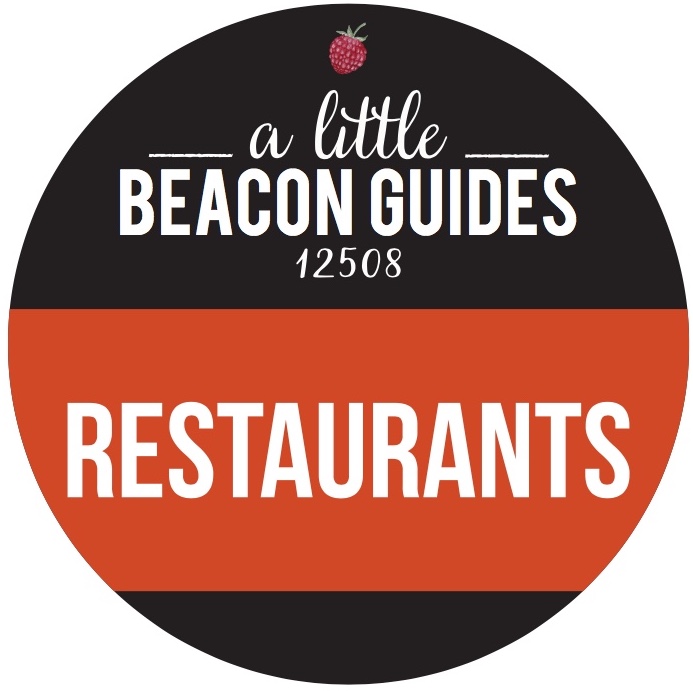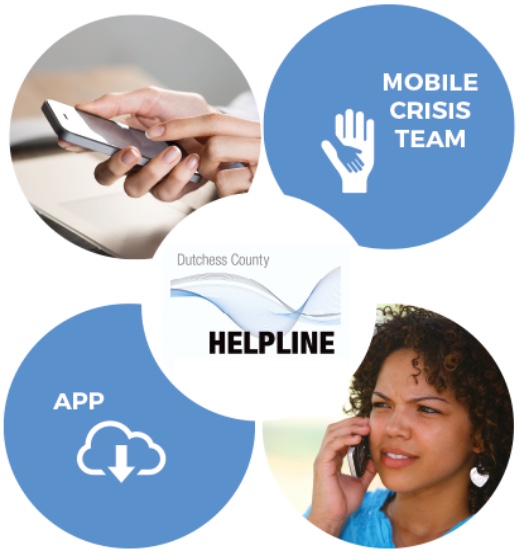The Recycling Market That Crashed - How The Crash Impacted Beacon
/Photo Credit: Katie Hellmuth Martin
EDITOR'S NOTE, BEFORE YOU READ:
This article was written in 2018 and never published; we missed the window of timeliness. Now, with the Plastic Bag Ban, we are publishing it. It helps serve as a background to any changes in recycling, trash collection, and any new environmental regulation.
During a City Council Workshop meeting on May 29, 2018, at which the City Council was talking to Royal Carting (the garbage company that picks up our trash) about the following year’s trash and recycling pickup contract, a few observational comments were made by then-Mayor Randy Casale and Councilperson at Large George Mansfield about how the recycling market had turned "topsy-turvy," in part because what is being put into the recycling bin is contaminated - aka coated with food and other nonrecyclable materials.
Beacon Used To Earn Money From Recycling - Now It’s An Expense
Beacon used to make money off the recycling collected from homes. There was a market for purchasing recyclable items like cardboard and plastic. However, thanks to China tightening its requirement on how clean the recycling needs to be - almost 100 percent clean, as in rinsed, no food on it, no soggy paper, no plastic bottle caps floating around the recycling bin, that sort of thing - Beacon is paying to have the recycling taken away. That’s a hit to Beacon’s budget.
Worse, the recycling that is being taken away might not be getting recycled at all since China won’t buy most of it.
Deep Dive Into The Recycling Problem
We are taking a Deep Dive into this issue, because when you ask yourself: "If it's not being recycled, where is it going?" you get some pretty bleak images of the floating barge of trash around New York City, the wad of plastic floating around the ocean, the massive amounts of methane gas coming from piles of trash, and food waste in landfills causing methane fumes.
You quickly see how there is not enough space on Earth to put the trash. And no, shooting it up into space is not an option. Space is already littered with orbiting satellite debris from when countries experiment with shooting things up there (yes, they have actually mapped out each floating piece of "space junk" if it's the size of a softball or larger to track it). So what gives?
Kayleigh Metviner Zaloga introduces us to the issues in order to help us discover and create a solution. But first, you'll need to get familiar with these basic ideas:
Money: Recycling is good for the planet, but it has to pay for itself and be profitable in order for it to be done. Businesses have been created to deliver recycling solutions: They collect the goods, sort them, clean them, even using technology to identify it (with high-tech machines and people who sort), and sell it to other businesses, who turn it into carpet or clothing or recycled paper, which consumers then buy as retail products.
Value: Different types of recycling, like glass bottles, newspaper, cardboard, or plastic to-go containers, have different values for these businesses. A single item, like a plastic laundry detergent bottle, might have a really high value (but is dirty inside with the last drops of detergent, so the processing center has to clean it). A wine bottle, on the other hand, is really recyclable, but is dirty inside with old wine. Cleaning the inside of a tall and narrow glass bottle is difficult and costly, which kills its market value.
A Solution Caused A Problem: Sadly, the invention of "single-stream" recycling, which is when you can throw ALL of the recycling into one can, is now messing up the system because it's all too much to sort. Oddities like a single bottle cap from a plastic water bottle is considered "contamination," but if that cap is attached to the bottle, it's all good. So convoluted.
Buyers: China was the biggest buyer of paper to be recycled. They didn't care if it was a little dirty. Now they do. As of January 1, 2018, they basically put the kibosh on buying it. This has created backed-up piles of compressed recycled paper waiting to be reused, but those bundles sit at recycling processing centers with nowhere to go because no one is buying it.
Food: Food makes up most of our trash. And wrecks a lot of recycling! Good news: Food composting is really easy!!! You just scrape the food into a special bin with a critter-proof lid, and have companies like Community Compost Company take it away to be turned into rich soil, without any of the big technology involved.
OK, now you're ready for Kayleigh's article on where this started:
Recycling in Communities
By Kayleigh Metviner Zaloga
Most people don’t realize that municipal recycling (aka household recycling) worked so well for so long because certain materials in our trash, like newsprint, glass, and plastic bottles, had economic value and could be sold to make everything from copy paper to carpets, making recycling profitable for processing facilities and a boon to city budgets.
In 2016, the City of Beacon was paid for every ton of recyclables picked up from residents and brought to the ReCommunity (now Republic Services Recycling) processing center.
The increase in recycling also reduced the volume of trash in everyone’s bins, saving the city money on garbage disposal. It was a win-win, both financially and environmentally. But at a presentation at a City Council Workshop on August 27, 2018, Steve Hastings of Republic Services informed the City Council that “recycling is broken,” profits are nowhere to be seen, and the current model may not be sustainable. Governor Cuomo has called for a series of meetings on what to do with the recycling being collected that may be ending up in landfills, and Beacon’s former mayor also indicated, in a past City Council meeting on May 29, 2018, that other counties in the state may stop recycling all together.
What’s Going On?
There are three main factors in this recycling industry sea change:
“American mixed paper used to sell for an average of $75 per ton. Now it sells for $5 per ton.”
1. China Basically Stopped Buying Lots of Recycling on January 1, 2018
China was the largest importer of recycled materials for decades, and the United States was one of its largest sources. Effective January 1, 2018, however, the Chinese government banned the import of 24 types of solid waste, including scrap plastics and mixed paper. They used to have a 3 percent contamination cap that, according to Steve, was rarely checked. Now they have a 0.5 percent contamination cap, and it is regularly checked by China by opening up bales of processed recycling at the docks, and sending it back if it has more than 0.5 percent dirtiness. Steve says it's an impossible standard to hit, despite their efforts. This triggered a huge drop in the prices that various municipal recycling components sold for. For example, American mixed paper used to sell for an average of $75 per ton. Now it sells for $5 per ton.
Recycling needs to be 100 percent clean before going into the bin. Any plastic with food on it won’t be recycled. Wet paper or cardboard won’t be recycled, either.
Photo Credit: Katie Hellmuth Martin
2. Contamination: Food (i.e. Dirty Recycling)
The leftover lettuce in your plastic salad to-go container. That last scoop of peanut butter in the jar. Yogurt still in the yogurt cup. Wet cardboard. Plastic grocery bags. Garden hoses. Greasy pizza boxes. Plain old garbage. All of these are things that do not belong in recycling bins. Throwing them in anyway contaminates all of the salvageable materials; worse, it can result in whole loads of recyclables being sent to a landfill. High contamination levels were also one of the main reasons the Chinese government banned many foreign recyclables.
“People really need to have it sink in that recycling is really just a band-aid at this point… The reality is that a lot of it doesn’t end up being recycled. People will throw everything they think of in recycling that might work, and it becomes dead weight for the company that processes it.”
3. “Wishful Recycling” - Feel-Good Recycling That Actually Kills Recycling
”Wishful recycling” was a term Steve used, for when someone throws something into the recycling container and feels good about it, but that thing is actually not recyclable. Like plastic of the wrong recycling number, a dirty wine bottle or yogurt quart, or soggy paper or cardboard. He actually stressed this directive: “When in doubt, throw it out.” They really don’t want mistaken recycling. At all.
Plummeting Profits In Recyclables Could Kill Collections
“No one ever thought there was a cost to recycling because the commodities covered it,” Hastings told the City Council. “So then when the commodities market flipped on its ear… Now all of a sudden it’s a red mark on every budget across the country.”
Since the announcement of the Chinese ban, prices in the recycling market have plummeted. Republic Services in Beacon is still accepting and processing mixed paper and newsprint, but high contamination rates and low prices may drive the facility to reconsider, Steve informed the City Council at the August workshop meeting.
Although reducing the volume of garbage in landfills is a good thing, simply shifting that garbage to recycling facilities is not. If the material cannot be processed, sold, and reused, it will likely end up in the landfill anyway.
“No one ever thought there was a cost to recycling because the commodities covered it,” Hastings told the City Council. “So then when the commodities market flipped on its ear… Now all of a sudden it’s a red mark on every budget across the country.” A complete market flip is no exaggeration: Materials that Republic Services sold for $120 per ton in July 2017 dropped to only $32 per ton last month (editorial reminder that this was originally written in 2018) after China’s ban was in place.
What Is Happening To Individual Markets for Recycling?
“We do have to come up with a model that is durable, sustainable … and isn’t captive to just the commodity values,” Hastings said. Glass, for example, is no longer a profitable material to process in most municipalities because it breaks, and in fact has a “negative recycling value,” meaning most recycling facilities have to pay for the material to be sorted out of the other recycling, then hauled away instead of selling it for a profit. The glass collected in Beacon's residential recycling bins is currently sent - at a financial loss - to a processing facility in Allentown, Pennsylvania. Some counties upstate have been transferring their glass to landfills for years. Here, it sounds like you should cart the glass bottles to Key Food or Hannaford, or to the local place in Beacon that can allocate your money back to a local PTA/O for Beacon school kids.
Some Counties Across the Country Are Stopping Single-Stream Recycling
Even though glass, newsprint, and certain metals and plastics can be recycled and remade into all kinds of products, plummeting prices, rising processing costs, and constricting markets are making recycling industry analysts and municipal leaders alike reconsider the current system. In some parts of the country, especially in western states like Idaho and Washington, municipalities have stopped collecting the materials they can’t find a market for, like the scrap plastics and paper now banned by China. Other communities, like Saugerties, are ditching single-stream for different collection bins and then use Beacon’s recycling location to dump commingled products.
Is It The Tariff War? China Warned About Contamination For Years
Contamination, also known in the industry as residue, is all the stuff that can’t be recycled by a particular facility and should not be mixed into the recyclables sent there. A high contamination level makes processing materials more difficult, and it was also the driving force behind China’s import ban. As more and more municipalities implement recycling programs, especially the single-stream variety that lets residents throw all of their recyclables into one container, companies that process these materials are noticing higher levels of contamination in the resulting haul.
But China Needs and Wants The Recycling - They Are Hurting
“China used to buy pulp for $220 a ton. After the ban, they buy it for $700 a ton.”
China is not having a great time with this ban either. The thing is, Steve explained, China needed our recycled paper for pulp. They don't have their own pulp, and they need to buy it. According to Steve, China used to buy pulp for $220 a ton. After the ban, they bought it for $700 a ton.
“So where is the savings for China?” Councilperson George Mansfield asked.
“There is no savings," explained Steve. "It’s a disaster on the Chinese front for the capitalist side of China. From the government standpoint, they have an anti-pollution campaign they are running hard. We never thought they would go six to eight months without the material [pulp aka paper].”
Whether it be nonrecyclable materials (like diapers, garden hoses, and syringes) or simply recyclables that have too much food garbage on them (peanut butter jars and to-go containers are notorious for this), contamination has become an increasing - and increasingly costly - problem.
Since too much contamination, even with other types of recyclable materials (e.g. glass in the newspaper bale), renders materials essentially useless, recycling centers need to spend more and more resources sorting and cleaning everything that is dropped off. This involves buying or inventing more elaborate technology, as well as hiring people to pick through the recycling, remove inappropriate items, and clean debris off materials.
At the Beacon Republic Services facility, the mixed recyclables move through “a series of sorting tables, devices, magnets, opticals, and people” - over 50 people per shift - to end up separated by material and grade, explained Steve. Spending more on processing would not be a problem if there were increasingly profitable markets for the end products, but that is where some of the biggest changes are taking place. Because the profits have disappeared, processing centers may close altogether, thus eliminating those jobs. Already, one of the biggest processing centers in the country in Miami has closed "overnight," said Steve.
Worldwide Trend of Rejecting Dirty Recycling
The Chinese government’s main reason for banning foreign recyclables and lowering contamination limits was that the materials were coming in too highly contaminated and were creating an even bigger pollution problem for the country. Although American companies have responded by increasing their exports to other countries, primarily in Asia, some of these countries appear to be following China’s lead and may institute their own limits and bans.
Republic Services currently sells materials to Indonesia, Malaysia, and Vietnam, but the shipping costs to these countries are significantly higher than what it used to cost to ship to China. Trading with China also had the added benefit of forming a kind of shipping loop, where U.S. recyclables were shipped on containers to China, and Chinese manufacturers shipped finished goods back to the U.S.
An Opportunity For A U.S. Recycling Market? Maybe, But Risky…
Would the U.S. market develop to replace the work that China was doing? "We’d love to see it," said Steve. But investing in a new facility is a risk. What if China opens up again? "There have been two paper mills open in the last 10 years in North America. They are both in Indiana, and they are both cardboard manufacturers. They’re dead in the middle of the country because of the fear that [if] the export economy opens up again, they fear they won’t be able to compete again."
As for domestic markets, there is simply not enough demand for these kinds of production materials in the U.S., though that could change in the future. A strong need for something always inspires entrepreneurs to bring on the solutions. In the meantime, American recyclables are looking at other options.
Real-Life Effects At Home In Beacon
“We are at a crisis at this point,” said City Council member Amber Grant at the Workshop meeting. "The fact that we’re barely even recycling what we think we are, and now we have this issue on top of it which will now impact people's pocketbooks... We need to teach people how to recycle better and give them the tools to do it." Councilperson John Rembert voiced his agreement.
“The economics are critical,” Steve said. “The model is broken the way it’s written. The processors need to get a processing fee, and the commodity piece has to be a shared component of it."
It has only been two years since we last looked at the costs and benefits of recycling in Beacon, but we are a long way from the days when the City earned money from each ton of recyclables collected. That additional income is no longer part of the arrangement, and going forward, Republic Services will seek a new rate structure to cover the increased processing costs that are not made up for by selling the materials.
In addition to considering how processing facilities are paid, Steve and the City Council members discussed limiting the materials that can be thrown into the single-stream recycling bins. “We have to simplify what we put in there,” Steve said. “There are a lot of items that can be recycled, [but] they may not belong in the [recycle bin].”
The hope is that by collecting fewer items and emphasizing the need to clean and dry objects before throwing them in the bin, there will be less contamination and more usable material. This is not to say that everything else should be sent to the landfill, however. Steve suggested having drop-offs and other arrangements for other materials.
Addressing The Crisis At The New York State Level
At the New York State level earlier this month, Governor Andrew Cuomo directed the Department of Environmental Conservation to convene stakeholder meetings to identify how the state can improve recycling and even “expand municipal recycling programs” in the face of changing global markets. One goal of this initiative will be to identify open markets for recycled materials. The inaugural meeting was on August 29.
Suggestions to Save Recycling
People's behaviors will need to change if any trash is going to be reduced. Here are some suggestions:
Reuse the durable products that can have a second life right in your own home, like glass jars.
“When in doubt, throw it out,” said Steve. Ouch! Only throw in items that you know are accepted by your local facility. Even though we may want more goods to be recycled, this aspirational recycling only leads to higher contamination rates and more materials being sent to landfills.
Clean It: “Clean material is the answer,” said Steve. Thoroughly clean any food debris, laundry detergent, and other non-recyclable materials off containers. Consider switching to powder detergent in the cardboard box.
Cap It: “If a cap falls off a bottle, it’s residual [aka contamination]. If it’s on the bottle, it’s great.” Screw lids onto plastic bottles before throwing them in.
Glass Bottles - Skip the Bin: If you want to give your glass bottles a better chance at being turned into new bottles, put them in the specialized bottle deposit machines that sort them, crush them, and keep them free of contamination.
Food Composting - For Real! 40% Reduction in Trash: Aside from smarter recycling, Atticus Lanigan, owner of Zero To Go, an education-based waste management company focused on composting and recycling in Beacon, also suggests taking a hard look at the other types of waste we routinely throw away. “40 percent of our waste is organic and rots in landfills,” she said, even though much of it can easily be composted. “People really need to have it sink in that recycling is really just a Band-Aid at this point… The reality is that a lot of it doesn’t end up being recycled. People will throw everything they think of in recycling that might work, and it becomes dead weight for the company that processes it.”
To Be Continued...
This story about how recycling as we know it is in jeopardy is to be continued, as perhaps we all make changes to reduce our footprint, both in terms of our rotting trash and the greenhouse gases it emits, as well as the growing stock of recyclable material that can’t rot and has nowhere to go.


















































